Trees Birds Mammals Fish Amphibians Reptiles
Wild Algarve
Bookshop
Menyanthes trifoliata - Bogbean
Phylum: Magnoliophyta - Class: Equisetopsida - Order: Asterales - Family: Menyanthaceae
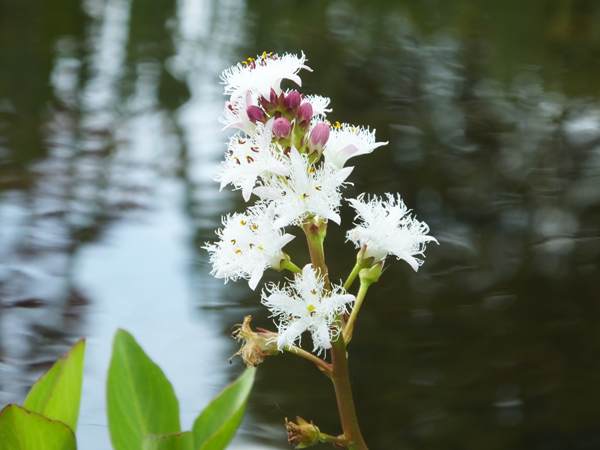
Looking far more exotic and beautiful than its common name suggests, Bogbean is surely one of the most beautiful of all wetland wildflowers.
Description
Bogbean is a most distinctive plant, especially when it is in bloom. Long, thick stems bear trifoliate leaves that individually look like the leaves of Broad Beans, and this, together with its propensity for growing in boggy ground, may well be the origin of the common name.
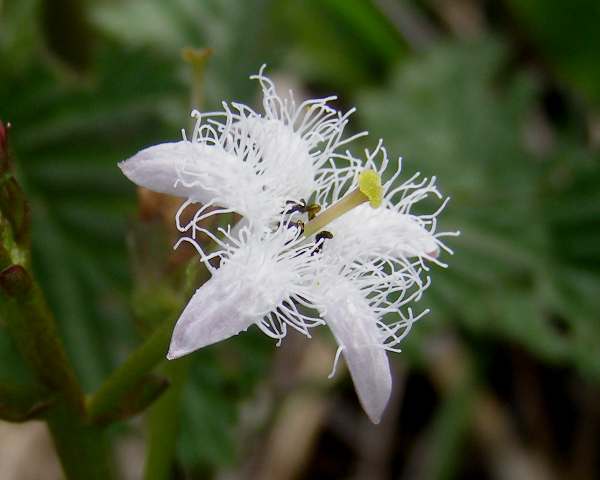
Delicate and star shaped, the flowers of Bogbean have an amazingly intricate structure, which becomes apparent only when they are fully open. Buds of Bogbean are pink, as initially are the undersides of flower petals, but the flowers become almost pure white when they are fully open.
Each individual flower has five (or very occasionally six) narrow pointed petals that are fringed along most of both edges by distinctive sprays of long white whiskers.The stems that bear the pyramidal spikes of flowers can extend to between 15 and 30cm above the surface, so that the flowers are clearly visible from quite a distance.
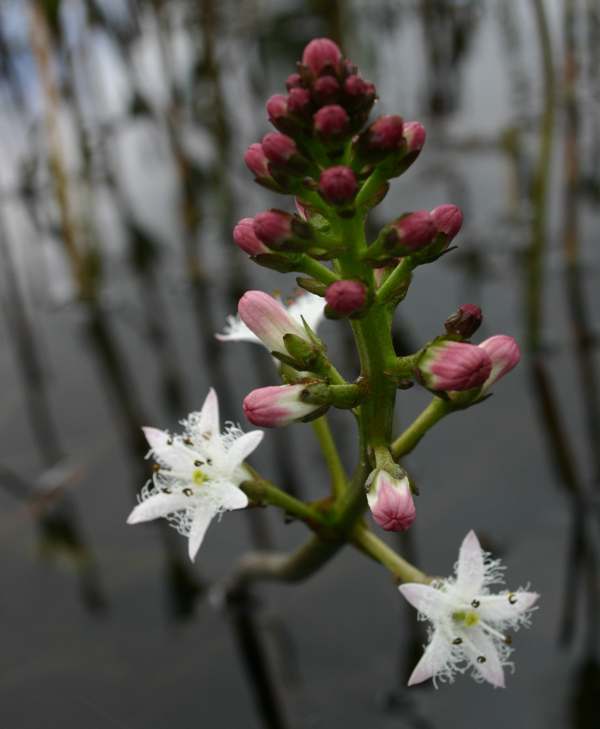
Distribution
Bogbean is widespread in Britain and Ireland. This wetland wildflower is also found throughout most of northern and central Europe. (We have seen it, for example, in Triglav National Park, in Slovenia.)
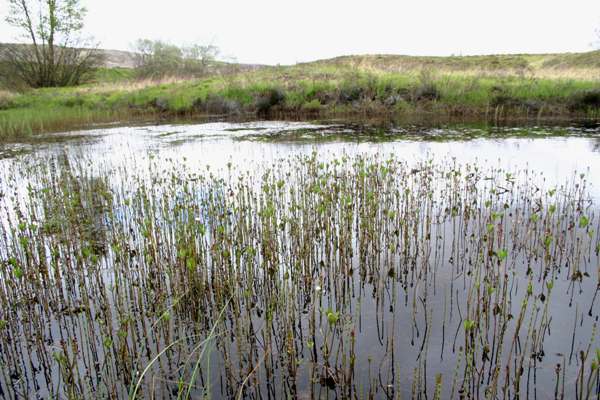
Habitat
Bogbean thrives in wet acidic soil. These plants thrive in shallow, low-nutrient pools, peat bogs and marshes, but any permanently damp depression in moorland is likely to be colonised by Bogbean.
The leaves and flowers all show above the surface, but propagation is largely via the thick sprawling stems that extend just below the surface of the soil or, when immersed, just under the surface of the water. The stems root at nodes and produce new flowering shoots, particularly where they make contact with wet peaty land.
Blooming Times
In Britain the first flowers of Bogbean appear in March and are usually at their best in April, and in lowland sites by early May the flowers are over. In the Scottish highlands Bogbean can still be seen in flower in early June.
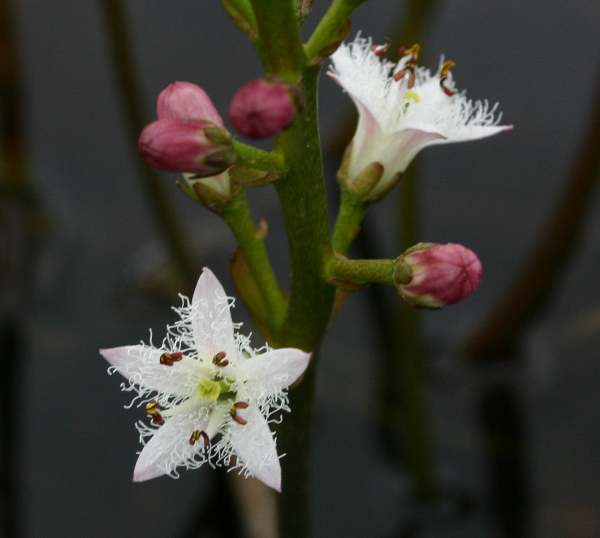
Etymology
The generic name Menyanthes probably comes from the Greek menyein, meaning disclosing, and anthos, meaning flower. This is assumed to be a reference to the fact that the individual flowers in the inflorescence open sequentially, starting at the bottom of the pyramid and ending with disclosure (revelation!) of the terminal flower,
Uses
In the past Bogbean was a popular medicinal herb and considered to be particularly valuable as a treatment for scurvy. Nowadays Menyanthes trifoliata is valued more for its ornamental value in and beside garden ponds. Bogbean is the county flower of Renfrewshire.
Similar Species
Bogbean is the only member of the Menyanthes genus and is unlikely to be confused with any other white-flowered species. Its nearest lookalike is probably Fringed Water-lily Nymphoides peltata, which despite its common name is not really a 'water-lily' but the only other member of the family Menyanthes. With yellow star-like fringed flowers, Fringed Water-lily is hardly likely to be mistaken for Bogbean.
The Bogbean specimens shown on this page were photographed in West Wales during April.
Sue Parker's latest ebook is a revised and enlarged edition of Wild Orchids in The Burren. Full details here...
Buy it for just £5.95 on Amazon...
Sue Parker's new ebook is a comprehensive and fully revised edition of her acclaimed field guide to the Wild Orchids of Wales. Full details here...
Buy it for just £5.95 on Amazon...
Please Help Us: If you have found this information interesting and useful, please consider helping to keep First Nature online by making a small donation towards the web hosting and internet costs.
Any donations over and above the essential running costs will help support the conservation work of Plantlife, the Rivers Trust and charitable botanic gardens - as do author royalties and publisher proceeds from books by Pat and Sue.